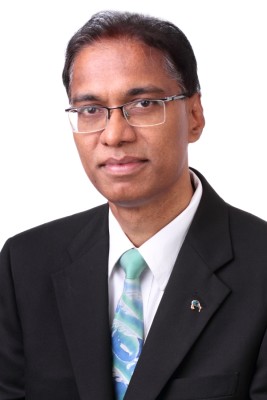- Details
- Written by Super Administrator
- Details
- Written by Super Administrator

Satya Kumar is the Founder and Managing Director of Shri Shakti Alternative Energy Ltd, established in 1998, which is clean energy consulting and solutions company. Satya had the opportunity to handle various consultancy projects for UNIDO, UNICEF, ADB and The World Bank. He was also a Consultant to Rajasthan Electricity Regulatory Commission (RERC) for determination of tariff for solar power projects. Shri Shakti Alternative Energy Ltd, promoted Rajasthan Solar Processing Zone, a 100MW solar park which is the first of its kind in the private sector in India and has been developed under a MoU with Government of Rajasthan. India’s largest vertically integrated utility in the private sector is one of the customers in this solar park.

Satya Kumar is a Mechanical Engineer from NIT, Warangal and completed M.S in Industrial and Management Engineering from University of Iowa, Iowa City in 1987. He was Chevening Gurukul Fellow at London School of Economics in 1997-98 . Satya Kumar is a co-promoter of Shri Shakti Group, based in Hyderabad with interests in Energy, Education and Hospitality businesses.
 |
 |
 |
- Details
- Written by Super Administrator
Downloads Section...
|
|
It is not just 100GW Solar target, positive macroeconomics beckon investors to India
The target of 100,000MW for solar generation by 2022, announced by the Indian Government, has attracted unprecedented interest from national and international investors. The investors, many of whom are completely new to power sector, were attracted by the long term Power Purchase Agreements (PPAs) and short gestation time for the project besides not having any dependency on fuel linkages. Of course, falling prices of solar cells and competitive bidding have brought the solar power tariffs in India in the range of Rs 5.09 to Rs 5.88 per kWh and quite attractive compared to wind, biomass and even new thermal power projects. |
|
|
|
Financing India’s Solar Revolution: Opportunities and Challenges – Webinar by SolarPlaza
Can India achieve the target of adding 100,000MW by 2022 ? |
|
|
|
A path breaking approach to sustainable urban and rural transportation!
Our hypothesis that India can target more than 100GW solar easily if solar is used for charging electric vehicles.
We should plan solar charging stations in ‘smart cities’ to begin with, and in rural areas and along the highways in due course.
. |
- Details
- Written by Super Administrator
Assumptions for cost of energy from Rooftop Solar Vs Grid Electricity in Hyderabad

- Grid electricity cost is Rs 9.38 per unit(including fixed demand charges) and escalates at 3% p.a
- DG electricity cost is Rs 15 per unit and escalates at 3% p.a and it constitutes 10% of energy mix for next 5 years
- Interest cost of 12.5% p.a considered on the diminishing invested amount assuming that savings and REC revenues pay for investment
- O&M cost is about 2% and escalates at 3% p.a and Insurance cost is 0.5% of the plant cost on depreciated cost/ WDV
- Generation from solar is simulated with PVSyst software using Meteonorm solar radiation datasets for Hyderabad
- Solar generation degrades by 0.5% per year.
- Renewable Energy Credits (REC) sales revenue is Rs 3.5 per unit until 2017 and Rs 1.5 per unit thereafter for 3 years
- Excise / customs duty drawback credit is about 5% of the plant cost
- As REC credits have been considered, the project is not eligible for 15% subsidy from central government and hence not accounted.
- Details
- Written by Super Administrator
How do our Grid Connected Solar Rooftop Systems work?
Grid Connected Solar Rooftop Systems are often rooftop based and are integrated into buildings but in India, the major deployment has been in the form of MW scale power projects which took off after the launch of the National Solar Mission in 2010.

- Electricity in the form of Direct Current (DC) is produced in the solar cells of the solar panels .
- The DC electricity from the panels passes through DC network to a grid tied inverter or a hybrid/SMD (Solar – Mains – Diesel) inverter.
- The Inverter converts the DC electricity into 220V AC for single phase or 415V AC for 3 phase by using state of the art MOSFET or IGBT technology.
- This is fed to the loads connected to the A/C distribution system linked to the AC grid supply.
- Solar power will be used as and when it is generated and integrated into the power supply .
(Optionally the solar power maybe stored in batteries and consumed as and when desired by the client) - The metering of the power consumed by the client will through a dedicated automated meter(This will be installed as per the approval of the local distribution company and will comply with CEA standards.)
The design of the system will be finalized during the preparation of the baseline study for the location.
Please click here for enquiry form











